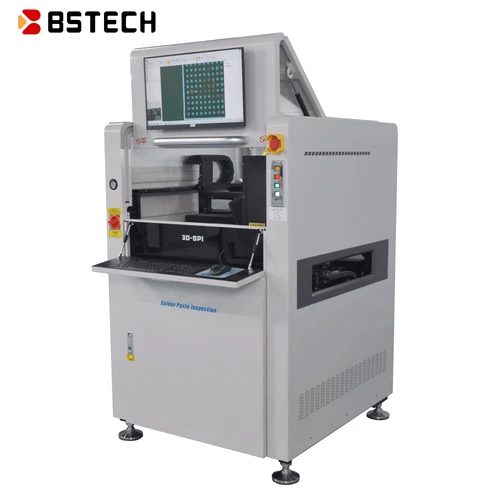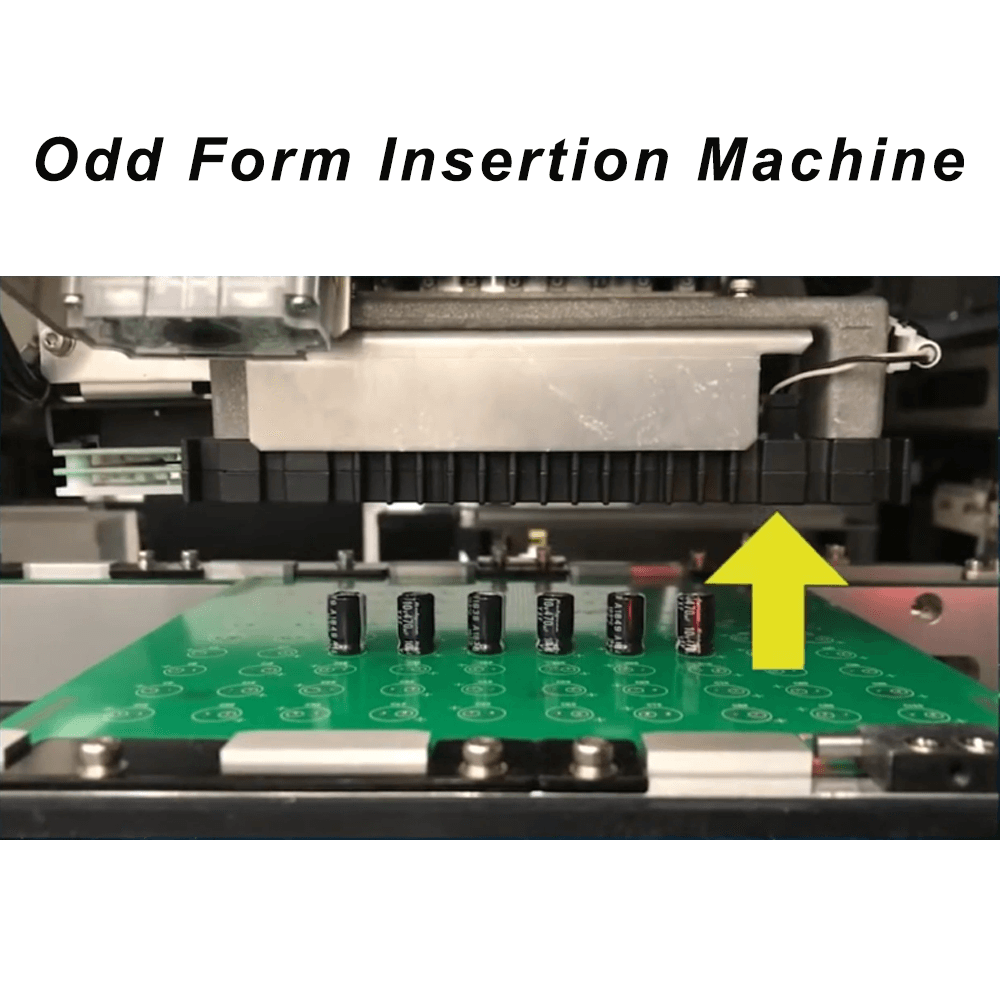Introduction
In the fast-paced world of electronics manufacturing, ensuring quality and precision is paramount. This is where SPI inspection, or Solder Paste Inspection, comes into play as a critical step in the solder printing process. By employing advanced technologies like automated optical inspection (AOI), manufacturers can significantly enhance production efficiency and product reliability.
What is SPI Inspection?
SPI inspection refers to a specialized process that evaluates the application of solder paste on printed circuit boards (PCBs). It involves using sophisticated optical inspection systems to detect defects in the solder paste application before components are placed on the board. Through this method, manufacturers can identify issues such as insufficient or excessive solder paste, ensuring optimal conditions for subsequent assembly processes.
Importance of Solder Paste Testing
Solder paste testing is essential for maintaining high-quality standards in PCB manufacturing. By implementing effective solder paste inspection techniques, companies can minimize defects and reduce rework costs associated with faulty assemblies. Furthermore, consistent testing ensures that the right amount of solder flux is applied, which is crucial for achieving strong electrical connections and overall product performance.
Overview of Solder Printing Process
The solder printing process involves several steps that require precision and attention to detail to ensure successful PCB assembly. Initially, a stencil applies solder paste onto designated areas of the board; this step must be meticulously executed to prevent defects that could lead to functional failures later on. With SPI inspection integrated into this process, manufacturers can monitor quality in real-time and make necessary adjustments before moving forward with component placement.
Understanding SPI Inspection

When it comes to ensuring the quality of printed circuit boards (PCBs), Solder Paste Inspection (SPI) plays a pivotal role. SPI inspection is a critical process that assesses the application of solder paste before components are placed on the board. The primary purpose of this inspection is to identify any defects in the solder paste application, which can lead to significant issues down the line, including poor electrical connections and increased rework costs.
Definition and Purpose of SPI Inspection
SPI inspection refers to the systematic evaluation of solder paste deposits on PCBs, focusing on their volume, shape, and placement accuracy. The main goal is to catch potential errors early in the manufacturing process, thereby preventing costly mistakes later on. By identifying inconsistencies in solder paste application—such as insufficient or excessive amounts—manufacturers can ensure that each PCB meets stringent quality standards.
The Role of Optical Inspection in SPI
Optical inspection is at the heart of effective SPI inspections, providing a non-destructive way to evaluate solder paste quality. Utilizing advanced imaging technology, optical systems capture high-resolution images of solder paste deposits for analysis. This allows for rapid detection of defects such as misalignment or uneven distribution, which are crucial for achieving reliable connections during assembly.
Key Technologies Behind Solder Paste Inspection
Several key technologies underpin modern solder paste inspection processes, enhancing both accuracy and efficiency. Automated Optical Inspection (AOI) systems are among these innovations and utilize sophisticated algorithms to analyze captured images for defects automatically. Additionally, advancements in 3D imaging techniques have significantly improved defect detection capabilities by providing detailed insights into solder flux characteristics and deposit profiles—making AOI optical inspection an indispensable tool in contemporary PCB manufacturing.
The Solder Paste Printing Process

The solder paste printing process is a critical step in PCB manufacturing, ensuring that the right amount of solder paste is applied to the printed circuit board (PCB). This process directly influences the quality and reliability of the final product, making it essential to understand its intricacies. By mastering this process, manufacturers can significantly enhance their solder paste inspection outcomes and overall production efficiency.
Steps in the Solder Paste Application
The application of solder paste involves several well-defined steps that are crucial for achieving optimal results. First, a stencil is aligned with the PCB, allowing precise openings for solder paste deposition. Next, a squeegee spreads the solder paste across the stencil openings, filling them evenly before lifting off to reveal perfectly applied solder deposits ready for component placement.
After applying solder paste, it's essential to conduct SPI inspection to verify that each pad has received an adequate amount of material. Automated optical inspection (AOI) systems play a vital role here by providing real-time feedback on any discrepancies in application thickness or volume. This proactive approach helps mitigate issues early in the assembly process and ensures high-quality output.
Importance of Solder Flux Quality
Solder flux plays an indispensable role in the effectiveness of solder paste application and subsequent performance during reflow processes. High-quality solder flux enhances wetting properties and promotes better adhesion between components and pads on PCBs. If the flux quality is compromised, it can lead to defects such as insufficient wetting or bridging—issues that are often caught through thorough optical inspection methods like SPI.
Moreover, using subpar flux can result in premature oxidation or contamination of both components and pads during assembly, leading to increased failure rates post-manufacturing. Therefore, ensuring top-notch solder flux quality not only boosts reliability but also minimizes rework costs associated with poor performance detected during AOI inspections later on in production cycles.
Common Challenges in Solder Paste Application
Despite its importance, several challenges can arise during the solder paste application process that may hinder quality outcomes. One common issue is inconsistent thickness across different areas of the PCB due to improper stencil alignment or uneven squeegee pressure—factors that can be evaluated through effective SPI inspection techniques. Additionally, environmental conditions such as humidity and temperature fluctuations may affect how well solder paste adheres to surfaces.
Another significant challenge lies in managing different types of components with varying footprint sizes; some may require more precise applications than others which complicates standardization efforts across batches. Lastly, maintaining optimal cleaning routines for stencils is crucial since residual pastes can lead to cross-contamination or blockages impacting future applications—all problems best addressed through regular automated optical inspection checks throughout production runs.
Benefits of Automated Optical Inspection
The integration of Automated Optical Inspection (AOI) in the solder paste inspection process has revolutionized how manufacturers ensure quality in PCB production. By utilizing advanced optical inspection techniques, businesses can significantly enhance the accuracy and reliability of their solder paste application. This not only leads to improved product quality but also streamlines the overall manufacturing workflow.
Enhancing Accuracy with AOI Inspection
One of the most significant advantages of AOI inspection is its ability to enhance accuracy during solder paste inspection. The precision of optical inspection technologies allows for detailed analysis, ensuring that every aspect of solder paste application meets stringent standards. With high-resolution imaging, manufacturers can detect even the slightest discrepancies in solder flux placement, which traditional methods might overlook.
Moreover, AOI systems can be programmed to recognize specific patterns and tolerances, further increasing the reliability of inspections. By minimizing human error and variability in solder paste application, companies can achieve a level of consistency that is crucial for high-quality PCB assembly. This enhanced accuracy ultimately leads to better-performing electronic devices and reduced risk of failures down the line.
Real-Time Monitoring and Feedback
Another compelling benefit of automated optical inspection is its capability for real-time monitoring and feedback during the solder paste inspection process. Unlike manual inspections that occur at set intervals, AOI systems continuously analyze each step as it happens on the production line. This immediate feedback loop allows operators to correct any issues with solder flux application on-the-fly, preventing defects before they escalate into larger problems.
The speed at which AOI optical inspection operates means that manufacturers can maintain a high pace without sacrificing quality control measures. If deviations are detected—be it insufficient or excessive solder paste—the system alerts operators instantly, enabling quick adjustments to be made immediately. This proactive approach not only enhances product quality but also contributes to more efficient use of materials.
Reducing Rework and Waste
Incorporating automated optical inspection into the SPI process plays a pivotal role in reducing both rework and waste associated with PCB manufacturing. By catching errors early through precise solder paste inspections, companies avoid costly rework later on—saving time and resources while maintaining production schedules. The reduction in waste also aligns with sustainability goals many manufacturers strive for today.
Additionally, effective AOI systems minimize excess usage of materials like solder flux by ensuring optimal amounts are applied during production runs. Less wasted material translates directly into cost savings for businesses while simultaneously promoting responsible manufacturing practices. In this way, automated optical inspection not only refines quality assurance processes but also contributes positively to a company’s bottom line.
Bensun Technology’s Contribution
Bensun Technology stands at the forefront of the PCB manufacturing industry, offering innovative solutions that enhance the solder paste inspection process. Their commitment to excellence is evident in their comprehensive approach to SPI inspection, which integrates advanced technologies and customer-centric services. By focusing on quality and efficiency, Bensun ensures that manufacturers can achieve optimal results in their production lines.
Comprehensive Solutions for PCB Manufacturing
Bensun Technology provides a suite of comprehensive solutions tailored specifically for PCB manufacturing, ensuring that every aspect of the solder paste application is covered. Their offerings include state-of-the-art automated optical inspection (AOI) systems designed to streamline solder paste inspection processes while minimizing errors. With a keen focus on integrating solder flux quality into their solutions, Bensun helps manufacturers maintain high standards throughout the production cycle.
The company’s SPI inspection equipment features cutting-edge optical inspection capabilities that enable real-time monitoring of solder paste application. This not only enhances accuracy but also reduces the likelihood of defects in printed circuit boards (PCBs). By leveraging advanced technologies, Bensun supports manufacturers in achieving IPC compliance and optimizing their production workflows.
Flexible Services for Customer Needs
Understanding that each manufacturer has unique requirements, Bensun Technology offers flexible services tailored to meet diverse customer needs within the PCB landscape. Whether it’s customizing an automated optical inspection setup or providing targeted training on effective solder paste inspection techniques, they prioritize adaptability and responsiveness. This flexibility ensures that clients can effectively address challenges related to solder flux quality and other critical aspects of their production processes.
Moreover, Bensun provides ongoing support and consultation services to help clients navigate the complexities of SPI inspection technology. Their team works closely with customers to develop strategies that maximize efficiency while minimizing waste during production runs. This partnership approach empowers manufacturers to achieve better outcomes through enhanced collaboration and shared expertise.
High-Quality Equipment and Support
At the heart of Bensun Technology's success is its commitment to high-quality equipment designed specifically for effective SPI inspection and AOI applications. Each piece of machinery undergoes rigorous testing to ensure reliability and performance under demanding conditions typical in PCB manufacturing environments. With an emphasis on precision engineering, these tools facilitate accurate solder paste application assessments while ensuring optimal performance across various production scenarios.
In addition to top-tier equipment, Bensun offers unparalleled support services aimed at helping customers maintain peak operational efficiency over time. Regular maintenance schedules are established to keep both SPI systems and AOI optical inspections running smoothly without interruptions or downtime. Furthermore, comprehensive training programs equip staff with essential skills needed for proficient use of these advanced technologies—ultimately leading to improved product quality.
Best Practices for Effective SPI Inspection
To ensure optimal performance in solder paste inspection (SPI), implementing best practices is crucial. By focusing on calibration techniques, regular maintenance, and staff training, manufacturers can enhance the reliability of their SPI processes. These practices not only improve the accuracy of optical inspection but also contribute to overall production efficiency.
Calibration Techniques for SPI Equipment
Calibration is a fundamental aspect of effective SPI inspection that ensures equipment operates within specified parameters. Regularly calibrating your solder paste inspection systems guarantees accurate measurements and reliable data, which are essential for maintaining quality control standards. Moreover, using standardized reference materials during calibration helps to mitigate variations caused by factors such as temperature or humidity.
Proper calibration techniques include establishing a routine schedule based on equipment usage and manufacturer recommendations. This proactive approach minimizes the risk of drift in measurement accuracy over time, ensuring that your automated optical inspection (AOI) systems deliver consistent results. Remember, a well-calibrated system enhances the reliability of solder flux application and ultimately leads to better product quality.
Regular Maintenance and Upkeep
Regular maintenance is key to prolonging the lifespan of SPI equipment while ensuring optimal performance during solder paste inspections. A consistent upkeep routine involves cleaning optical components, checking alignment settings, and updating software to accommodate new features or improvements in AOI optical inspection capabilities. Neglecting these tasks can lead to inaccurate readings and increased downtime due to unexpected repairs.
In addition to routine checks, it’s essential to keep an eye on wear-and-tear parts that may affect performance over time—think sensors or cameras used in your automated optical inspection systems. Scheduling preventive maintenance not only reduces the likelihood of equipment failure but also fosters a culture of quality awareness among staff members involved in the solder paste printing process. By prioritizing regular maintenance, you can significantly reduce rework and waste associated with faulty inspections.
Training Staff on Solder Paste Inspection
Training is perhaps one of the most critical aspects when it comes to effective SPI inspection practices; after all, even the best technology needs skilled operators behind it! Providing comprehensive training programs ensures that staff members understand both the technical aspects of solder paste application and how to interpret results from automated optical inspection tools effectively. Knowledgeable employees are better equipped to identify issues early in the process—saving time and resources down the line.
Moreover, ongoing training sessions help keep staff updated on advancements in SPI technology as well as changes in industry standards related to solder flux use or PCB manufacturing processes. Encourage cross-training among team members so they can share insights about different aspects of solder paste inspections; this collaborative approach fosters innovation while reinforcing best practices throughout your organization’s workflow. Ultimately, investing in employee education pays dividends through increased efficiency and improved product quality.
Conclusion

In the ever-evolving landscape of PCB manufacturing, SPI inspection stands as a critical component ensuring quality and reliability. As technologies advance, solder paste inspection methods are becoming increasingly sophisticated, allowing for quicker detection of potential defects. The future promises even more integration of automated optical inspection (AOI) systems that will enhance efficiency and accuracy in the solder paste application process.
The Future of SPI Inspection Technology
The future of SPI inspection technology is bright, with innovations poised to revolutionize how we approach solder paste inspection. Enhanced algorithms for optical inspection will enable machines to identify defects with greater precision and speed than ever before. As automated optical inspection continues to evolve, we can expect real-time data analytics that not only detect issues but also provide actionable insights for continuous improvement.
Maximizing Efficiency in PCB Manufacturing
Maximizing efficiency in PCB manufacturing hinges on effective solder paste application processes and robust SPI inspection protocols. By integrating AOI optical inspection into the workflow, manufacturers can significantly reduce rework rates and minimize waste associated with faulty solder flux applications. Ultimately, this leads to a more streamlined production line where quality assurance is both proactive and reactive.
Choosing the Right Partner for IPC Compliance
Selecting the right partner for IPC compliance is crucial for maintaining high standards in solder paste inspections and overall PCB production quality. A partner that emphasizes advanced automated optical inspection solutions will not only help ensure compliance but also foster innovation within your processes. Remember, when it comes to achieving excellence in SPI inspection, collaboration with a knowledgeable partner can make all the difference.
